At the end of the year, are you able to show how the work you are doing as a Salesforce Admin has impacted the business? To show hard metrics, you need things like time saved because of automations, mishaps averted due to cleaner data, streamlined processes and more?
One of the things I think every Salesforce Admin (and Developer and Business Analyst and Architect) can be more proactive about, is quantifying the work they are doing. Using our own tool to show the awesomeness we are bringing to the business. And show us when our automations are being used as expected.
In this article, we’ll explore how you can use a simple Flow to track and measure the success of your Salesforce Admin automation and quantify your work. Let’s get started!
Good Change
When our internal customers come to us with a requirement, it is usually because something is not working: something they need to do their job that we can help with. It may be a report, a new field to enable better reporting, or a change to improve a process.
Years ago, I was able to partake in Kaizen training at a manufacturing plant where I worked, then a few years later, I got to go through a Lean Six Sigma Green Belt program. If you’ve ever looked into these programs, you know they focus on process improvement which includes things like building efficiency, reducing waste, improving quality and making jobs more fulfilling.
This sounds a lot like the job we undertake as Salesforce Admins as we manage our Salesforce platforms.
The word kaizen is a term taken from two Japanese words that literally mean “good change.”
When I think of the declarative tools we now have at our disposal to affect good change for our users and companies I get excited. But how do we know a change is good? How do we know if we are creating efficiency, reducing waste, improving quality or making a job more fulfilling?
Measure All The Things!
When you think about the automations or flows that you have created to streamline a process, do you ever stop to think how much time was actually saved? Then take that to another level and multiply that times with how often the process is repeated/run?
My platform owner and I decided to do just that and build it in as a part of every automation. We wanted to be sure that there was a way to quantify the work we were doing. We made it simple and repeatable and used our own tools to measure everything.
What it Took
One custom object. One auto-launched flow.
We called the object Automation Analytics (a mouthful, I know). I like auto-generating the Record Name with a number AA-{00000000} or something similar. It’s got an Owner field already as well as the Created Date/Time field.
You really only need to add 2 extra custom fields: Automation Name (where you will pass in what you want to call this automation for reporting later) and Time Saved (where for each automation you will pass in as an input value a number that represents the minutes saved by this automation).
You could add other values you want to analyze, such as which department this is attributed to or even who built it. The sky’s the limit here.
Next up, you create a simple auto-launched Flow.
Create 2 Variables for Automation Name and Time Saved (and any other field you created that you want to set upon entry into the flow) and be sure to mark them as Available for Input – this will make the variables available to populate from the Process Builder or Flow that is calling the new Automation flow.
Then a simple Record Create where you set the values of the Automation Analytic record you are creating with your input variables.
When you save, give it a good name and don’t forget your description! Then click the Advanced link and choose to run this flow in System Context without Sharing – this ensures that the record can be created, regardless of the user who triggers it.
Badabing badaboom! You can now call this Flow at the end of any other Flow or as an Action in Process Builder and generate Automation Analytic records every time one of your automations is used.
Time is Money!
The hardest part of this is probably getting to that ‘Time Saved’ number. So take out your stopwatch and have a little ‘Time Study’ party – this could involve timing the original process yourself or timing a user doing it. This way you’ll be able to quantify how much time it took vs how much time the new process takes. Some things will be easy to time, some will be a little harder and may require educated guesses.
After using the system for a few years, we added a Flow to make creating a Project (and all the ancillary records needed) easier. In addition to just making the process quicker (went from about 11-14 minutes with no interruption to 3-4 minutes), we were also able to default fields from other objects to eliminate data entry errors.
You’ll want to quantify eliminating errors in your time saved as well. For example, the actual time saved was 8-10 minutes, but if we include the time spent fixing errors, I would estimate it at maybe 10 minutes total for each new project created using the Flow.
Another example is when we wanted to purchase a tool to implement a process for creating Folders and Folder Structures in our document management tool. We wanted to use an integration tool that cost a small amount per month, so that when a record was created in Salesforce, we could send an outbound message to the tool to automate folder creations in the ‘right way’ for our company, then bring back in the URL of the new folder to populate it onto the Salesforce record.
This was a Net New process that didn’t exist before. So we simulated someone doing it manually (notified them of the new record, they go to the tool, manually create the folders and folder structure and then populate the record) and used that number as time saved. Turn that time saved into dollars and you can now justify the cost of the tool you are using for the integration.
Summary – Celebrate your successes!
Here’s where you create some reports, throw them on a dashboard and show off the amazing work you are doing.
Not only can you see the fruits of your labor, but you might also identify areas where people aren’t using the cool automations that you are building (wait, what?) – yes, it does happen.
You may notice a trend in the people using them (based on the Automation Analytics record owner) or that they aren’t being used at all, which will give you a chance to ask the best question – why? Find out if it’s a technical problem, a training issue or an “I’ve always done it this way!” issue. Then adjust as needed.
Not all automations blow it out of the ballpark, but when they do, you can really be an unsung hero. Tracking things that you build, quantifying the results and ensuring that people (management) are seeing those results can shine a spotlight on the work you are doing.
LucidChart Link: https://lucid.app/documents/view/31cb78b2-9f39-4e07-a998-f5f2b8ae5f39
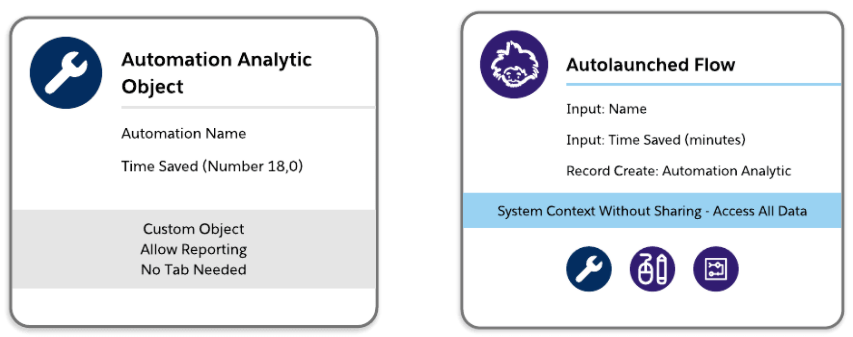
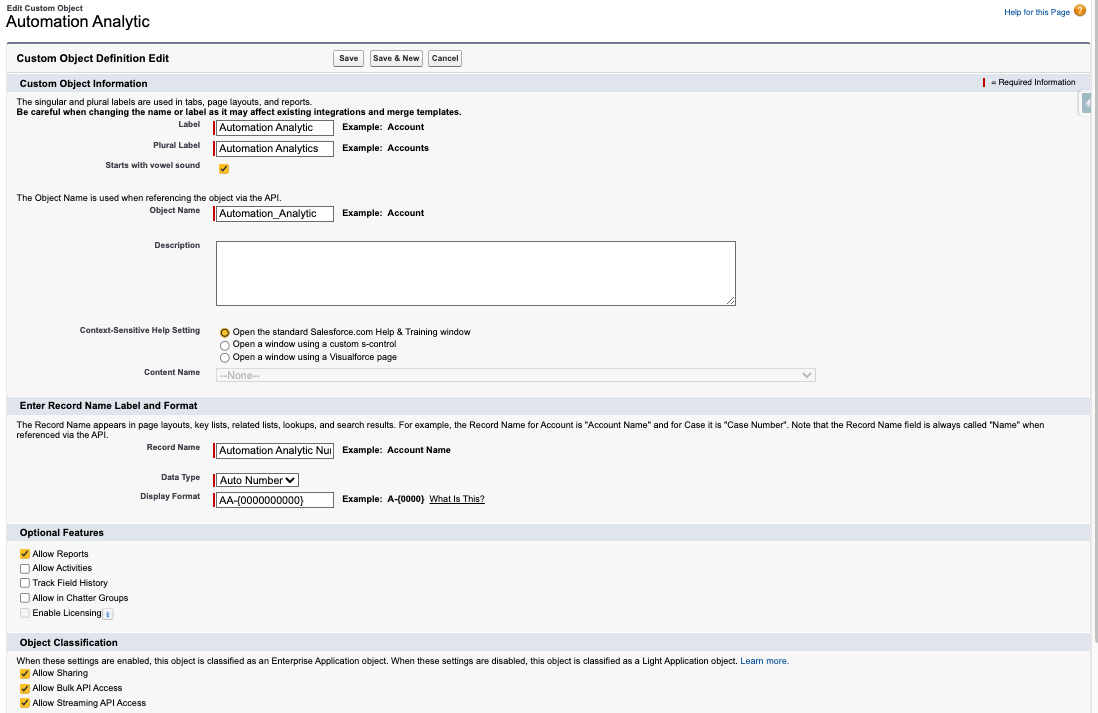
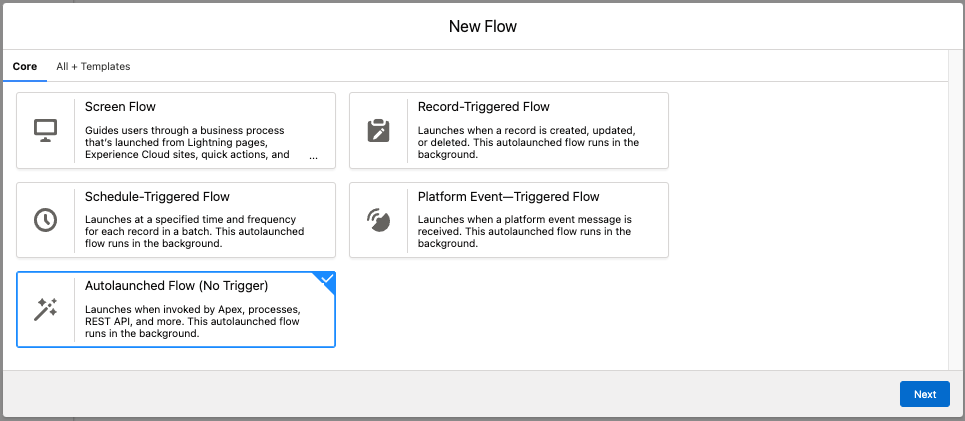


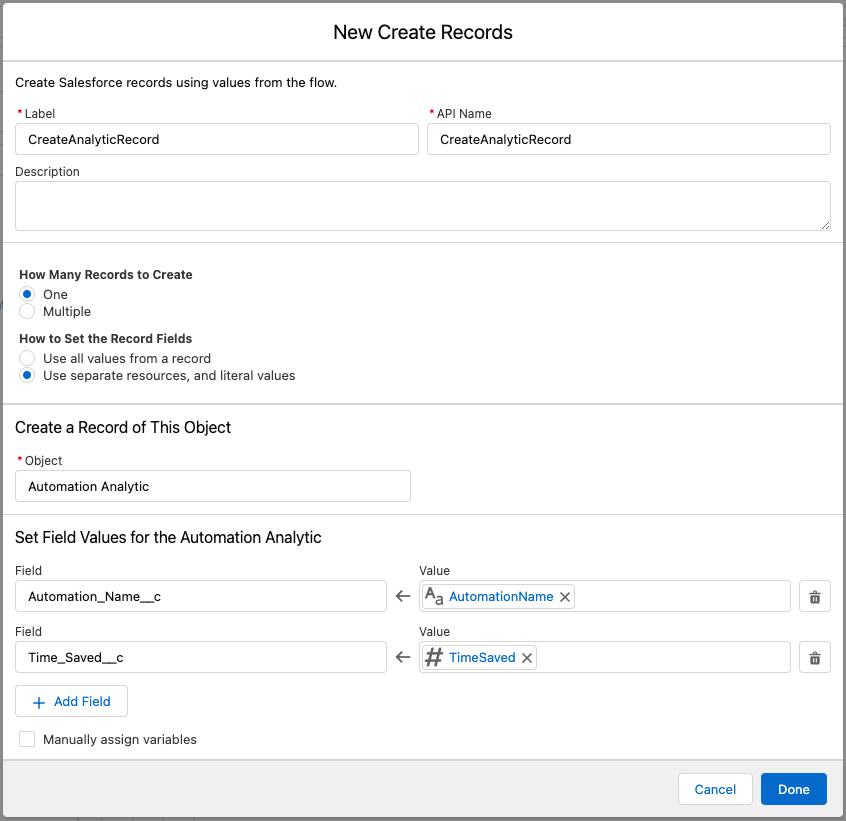





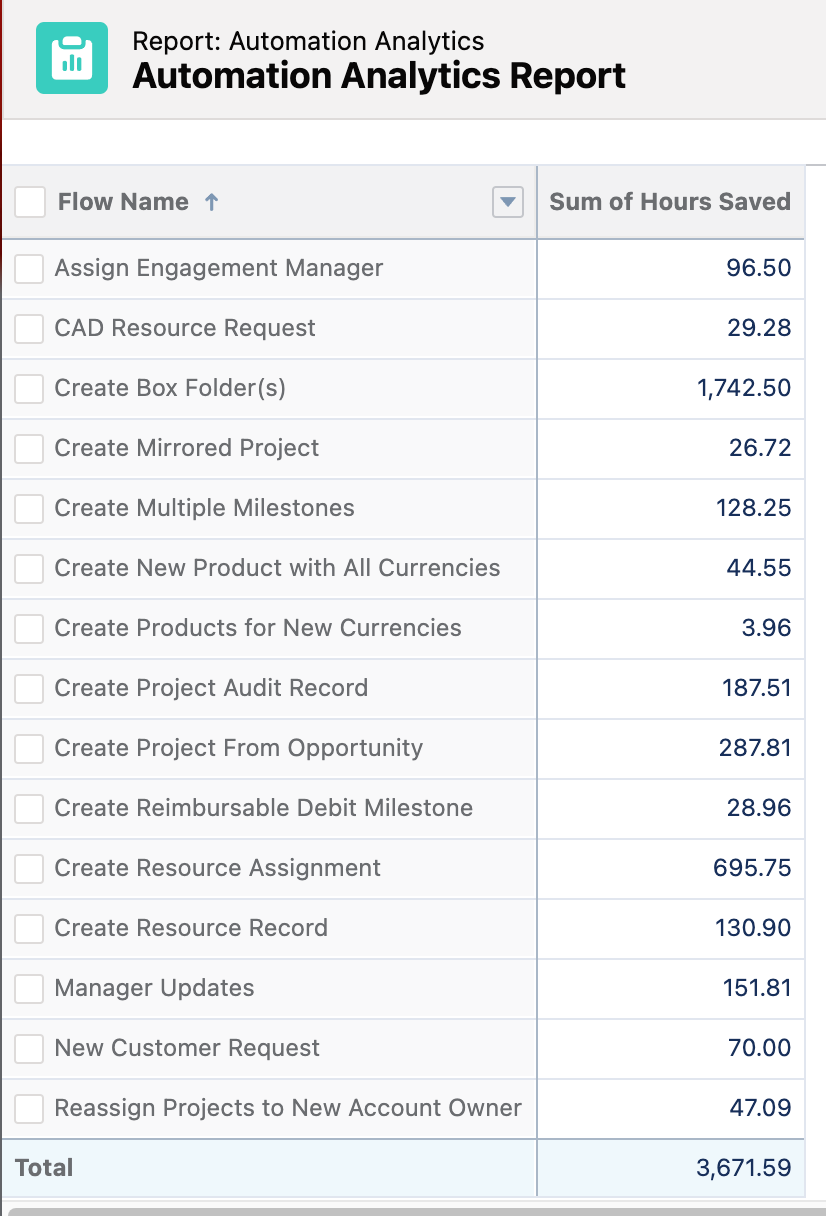
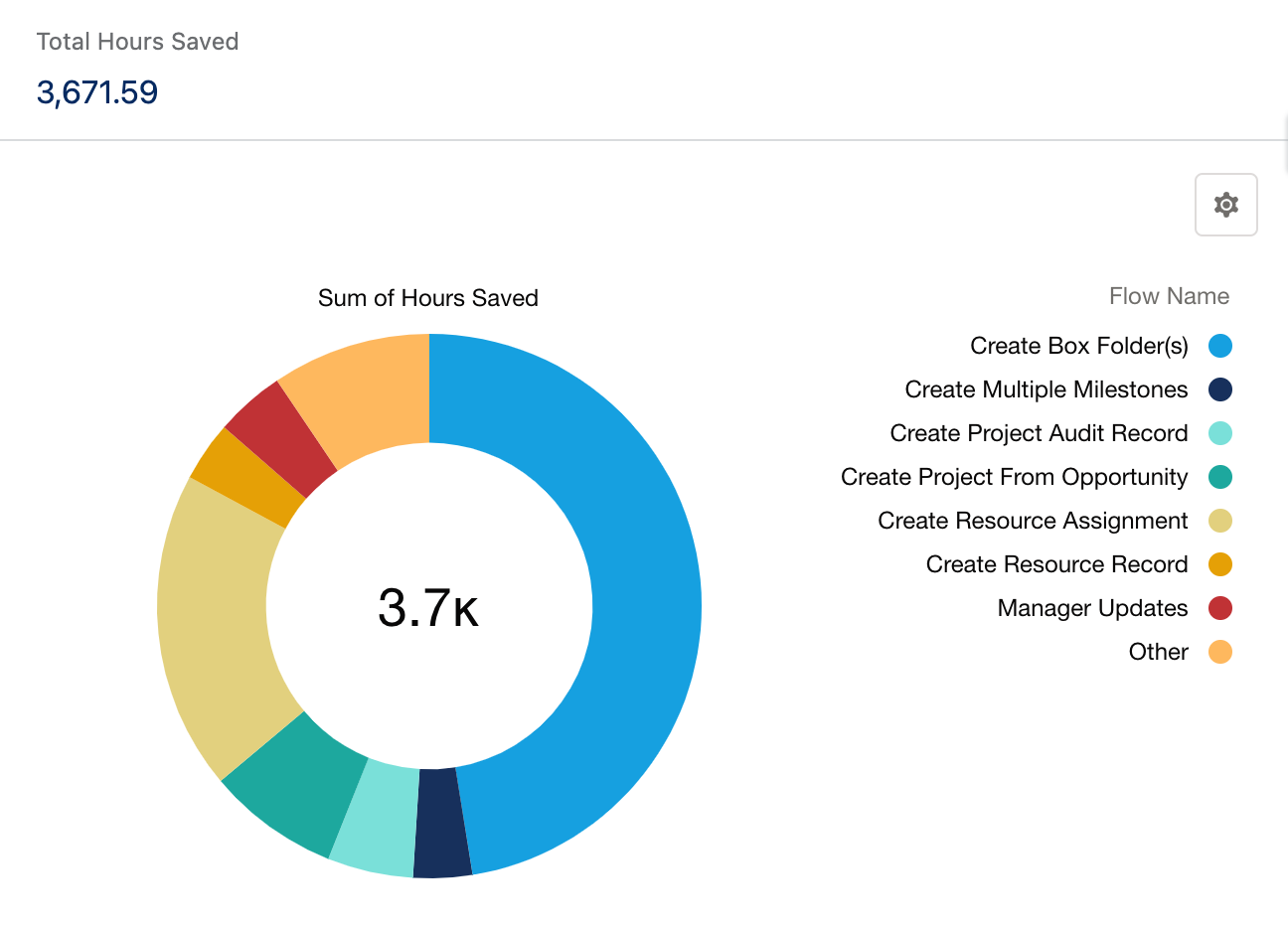
Comments: